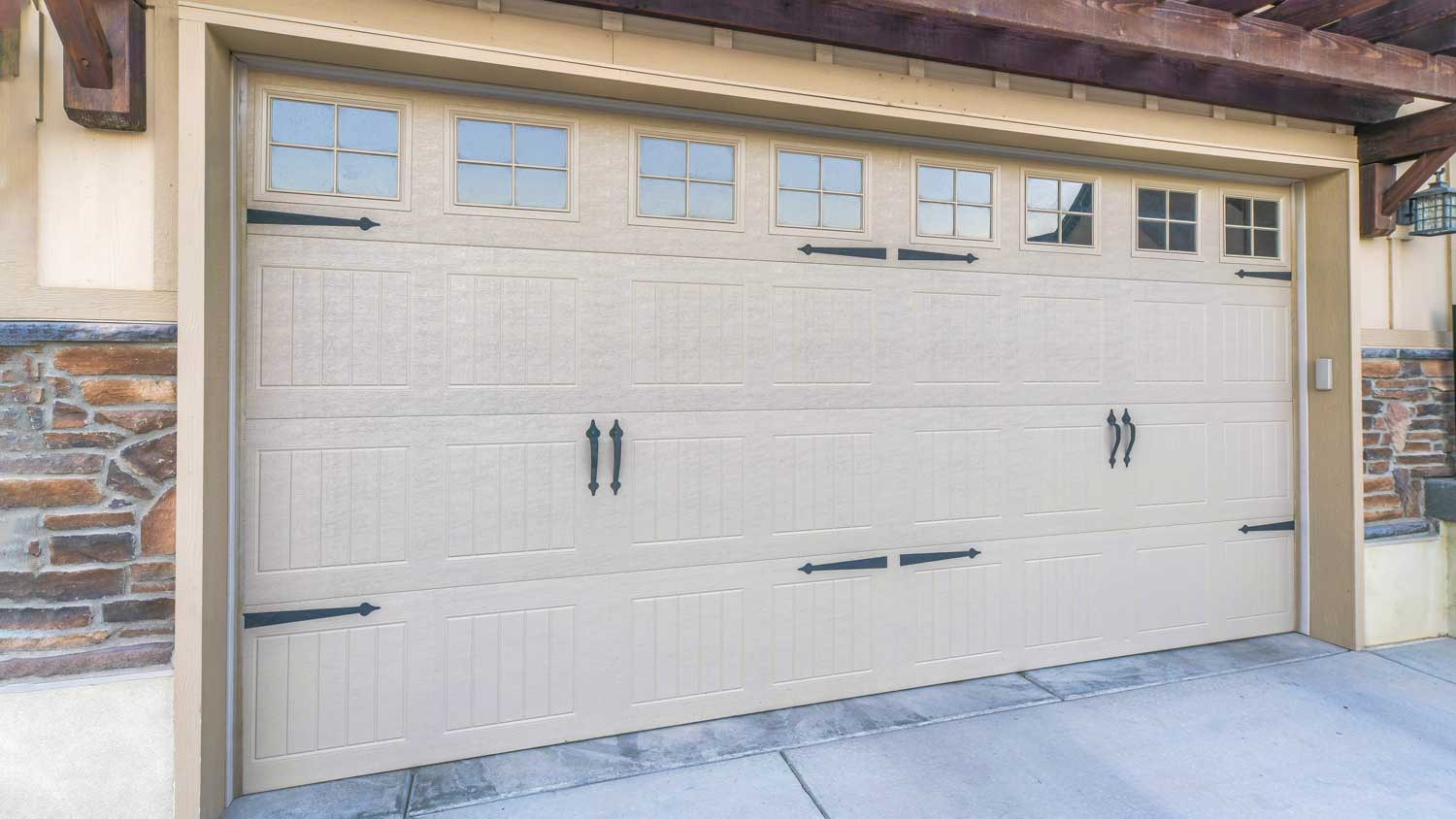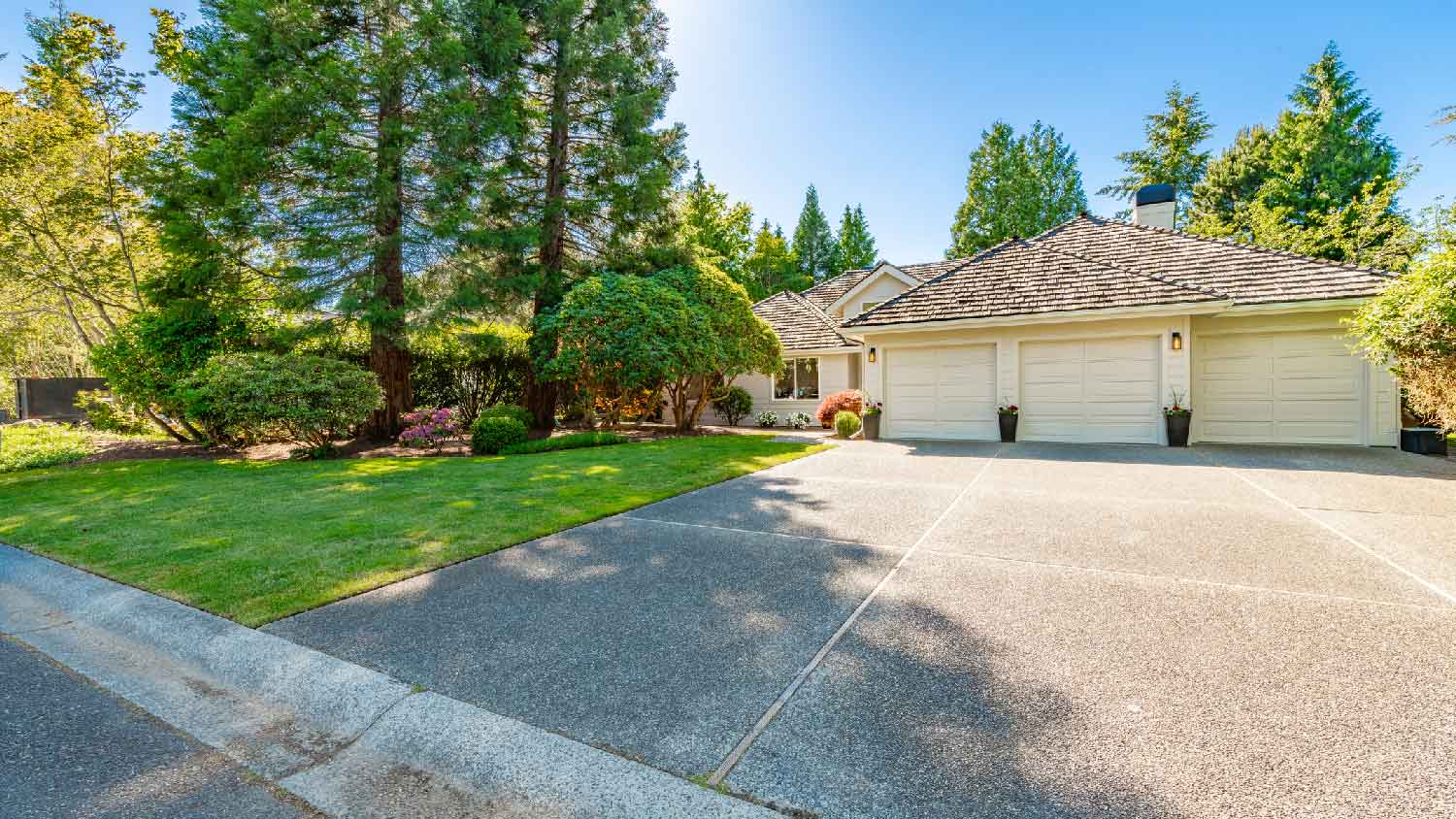9 Types of Garage Door Springs
Learn all about these garage door heavy lifters


Garage door springs are the unsung heroes of your door’s functionality, responsible for lifting and lowering the door safely and efficiently. While there are two main categories—torsion springs and extension springs—each category includes subtypes with unique features, benefits, and drawbacks. Whether you’re considering a replacement or exploring options for a new garage door, use this guide to understand the types of springs that will work best for your needs and budget.
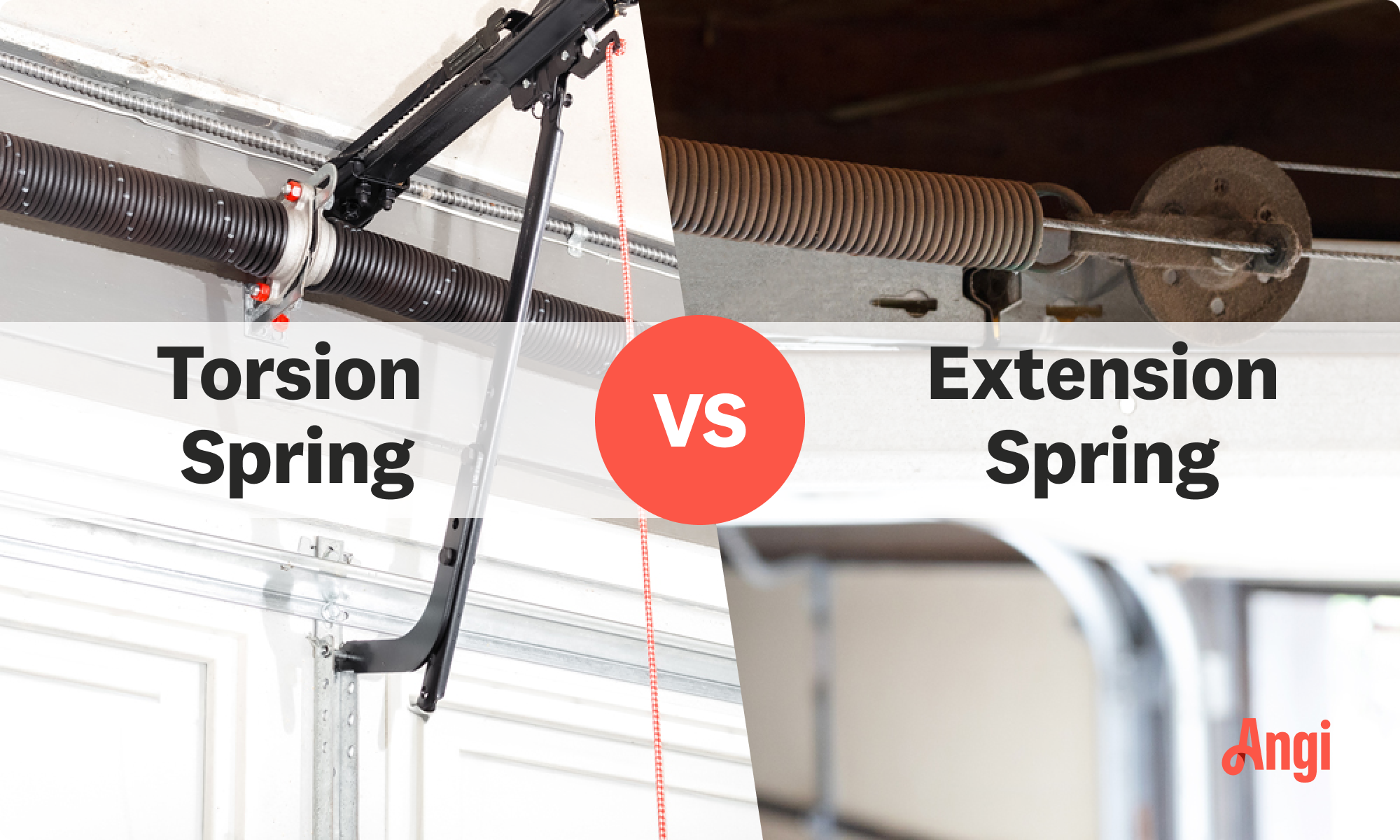
| Feature | Torsion Springs | Extension Springs |
|---|---|---|
| Mechanism | Uses torque (twisting) to balance the garage door's weight | Stretches and contracts to counterbalance the door's weight |
| Durability | Longer lifespan (10–20 years, depending on type and maintenance) | Shorter lifespan (5–10 years) |
| Operation | Smoother and quieter operation | More jerky movements and louder operation |
| Safety | Safer design—less likely to snap | Higher risk of snapping, which can cause sudden door failure |
| Maintenance | Requires regular lubrication | Needs frequent adjustments and inspections to maintain performance |
| Cost | Higher upfront cost | More affordable initially but may require more frequent repairs and replacements |
| Weight Support | Handles heavier doors more effectively | Better suited for lighter doors |
| Installation | Complex installation requiring professional tools and expertise | Easier to install |
1. Standard Torsion Springs
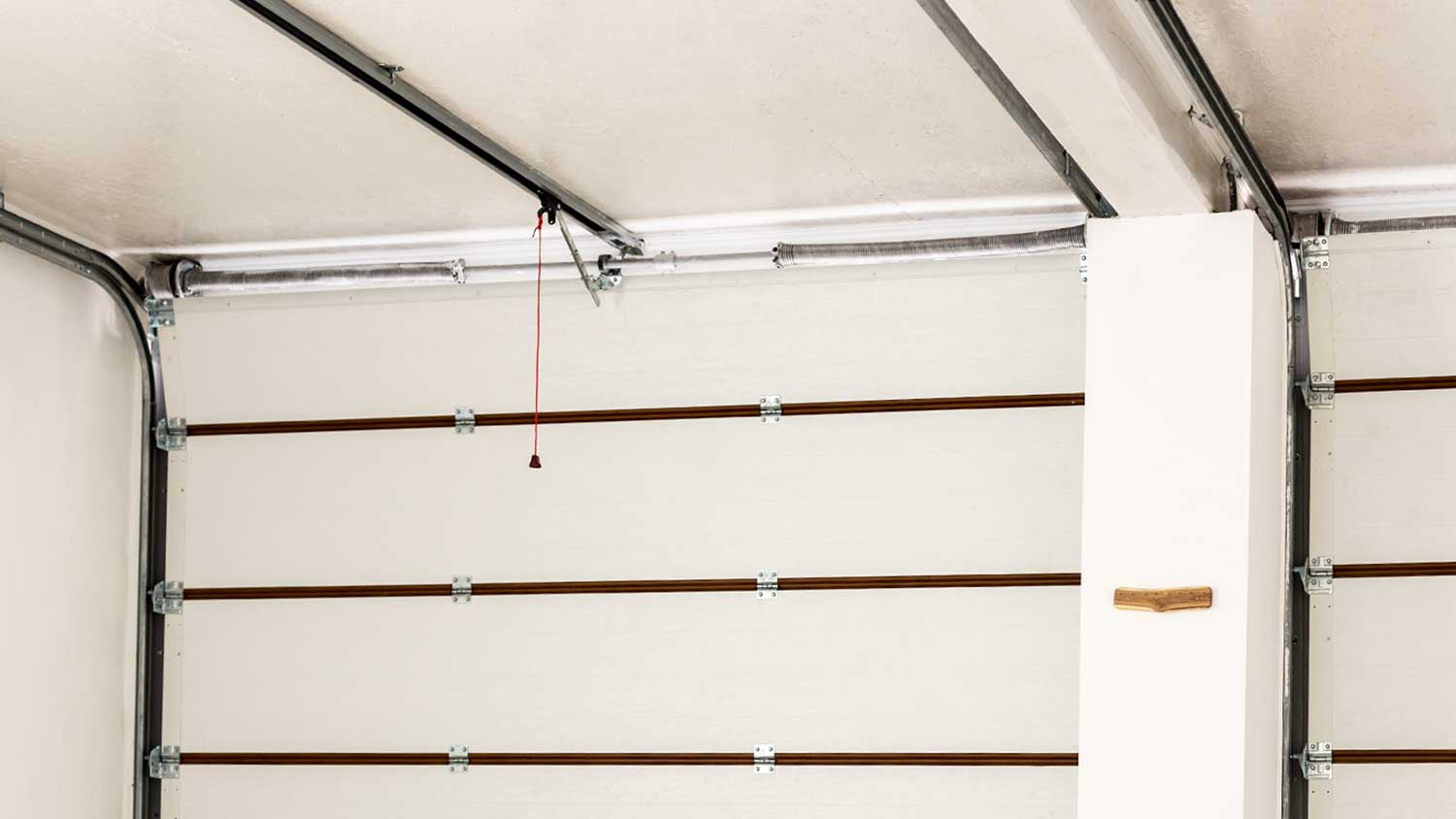
Most residential garage doors use standard torsion springs. These springs are installed horizontally above the garage door and work by twisting, aka using torque, to balance the door’s weight. This design makes it safe and easy to open and close the door, whether manually or with an opener. Made from high-quality steel, they’re known for their durability and smooth, quiet performance.
| Pros | Cons |
|---|---|
| Quieter than extension springs | More expensive than extension springs |
| Relatively long-lasting | Require regular lubrication and maintenance |
| Durable and reliable | Need professional installation |
Best for: Homeowners seeking a relatively long-lasting, quiet, and reliable spring system.
2. EZ-Set Torsion Springs
Compared to standard torsion springs, EZ-Set torsion springs are designed for easier installation and adjustment. Unlike traditional torsion springs, EZ-Set springs come with a built-in winding mechanism, which removes the need for specialized tools to install them. It also reduces the risk of injury during adjustments, so many homeowners can adjust EZ-Set springs themselves. Typically sold in pre-assembled kits tailored to specific door sizes, these springs offer reliable performance for standard garage doors.
| Pros | Cons |
|---|---|
| Simpler installation than standard torsion springs | Shorter lifespan than standard torsion springs |
| Quieter than extension springs | Not suitable for very heavy or oversized doors |
| Relatively easy DIY adjustments | Replacement parts can be tough to find |
Best for: Homeowners seeking a user-friendly spring system for standard garage doors
3. Steel Rolling Door Torsion Springs
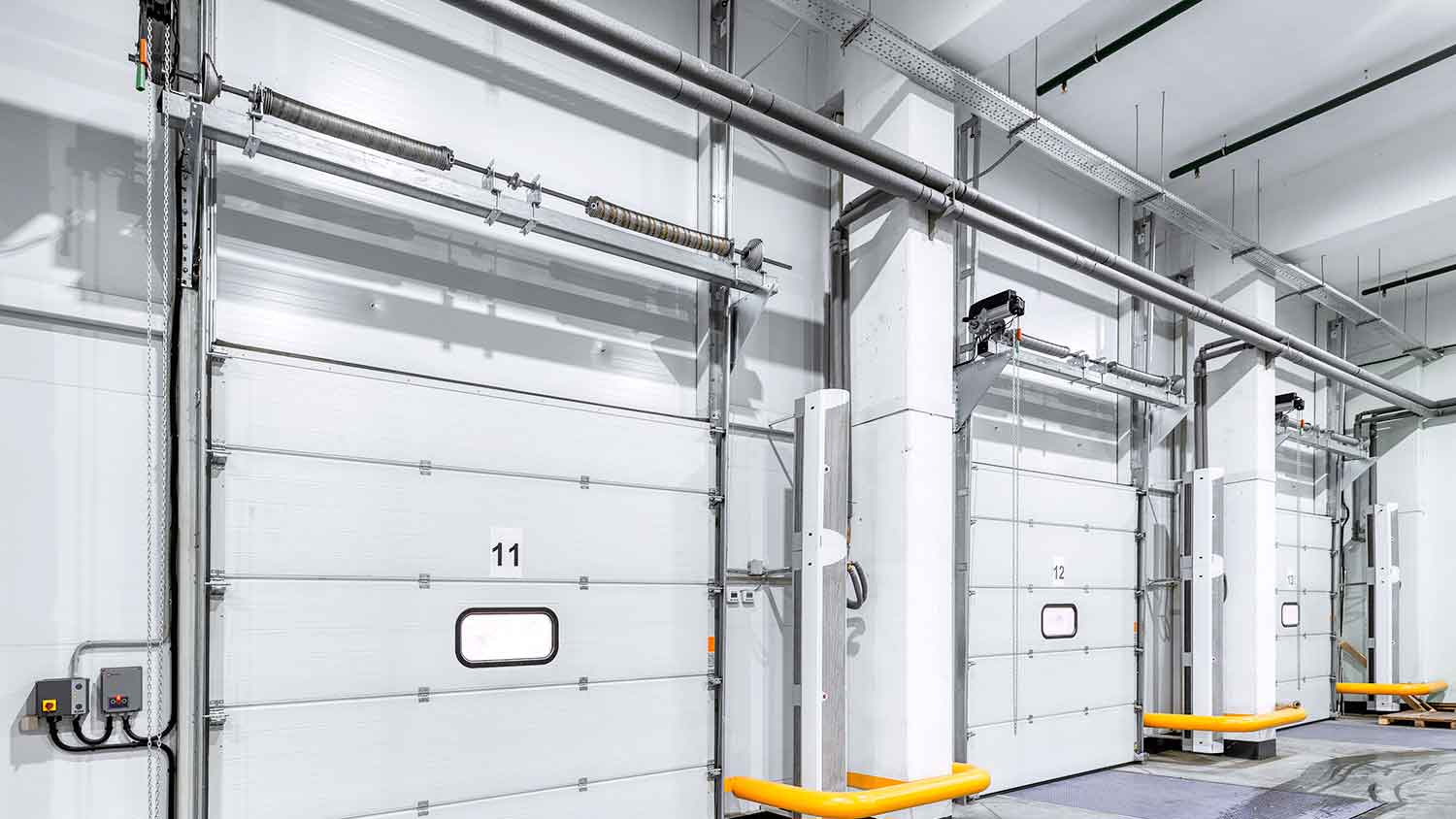
Steel rolling door torsion springs are heavy-duty springs specifically designed for commercial and industrial garage doors. These springs are larger and more durable than those used in residential systems, allowing them to support the weight of steel doors. Their durability and strength make them a popular choice for warehouses, factories, and other high-traffic facilities. These springs require a garage door company to professionally install them
| Pros | Cons |
|---|---|
| Can support extremely heavy doors | High upfront costs |
| Long lifespan | Requires professional installation and adjustment |
| Smooth and reliable operation | Not suitable for residential garage doors |
Best for: Commercial or industrial settings with heavy, high-traffic rolling doors that require exceptional durability and strength.
4. TorqueMaster Torsion Springs
Unlike standard torsion springs, TorqueMaster springs are enclosed in a steel tube, keeping them out of sight and reducing the risk of injury if a spring breaks. This enclosed design also protects the springs from dirt and debris, helping to maintain smooth operation over time. While convenient, these springs are proprietary, so they require specific tools and parts during installation and if you ever need a spring replacement.
| Pros | Cons |
|---|---|
| Sleek, clean appearance | Only compatible with Wayne Dalton doors |
| Smooth and quiet operation | High upfront costs |
| Protects springs from debris, reducing wear and tear | Repairs require specialized tools and parts |
Best for: Homeowners with Wayne Dalton garage doors who value safety, aesthetics, and low-maintenance operation.
5. Early-Set Torsion Springs
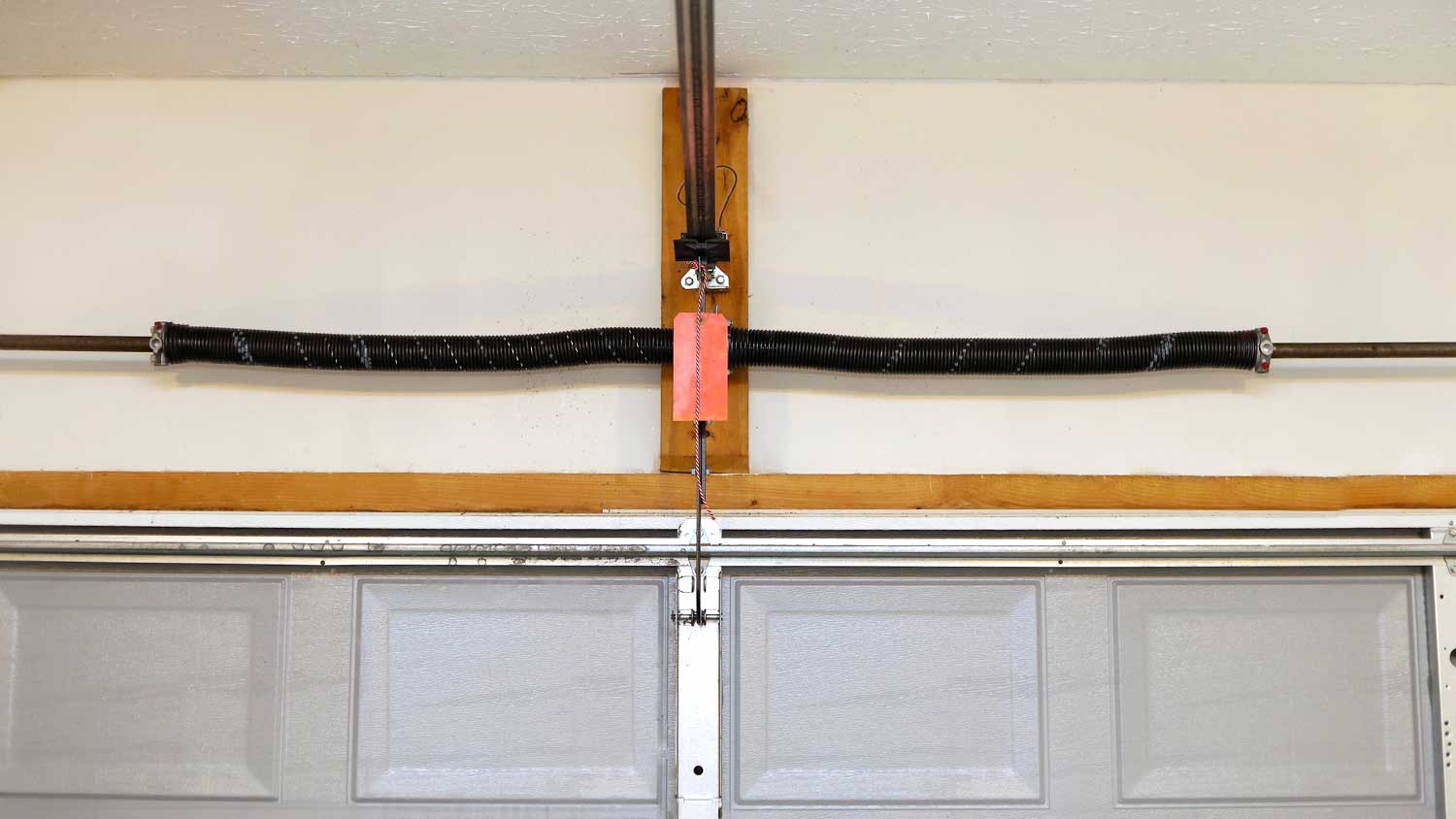
Early-set torsion springs are commonly found in older garage door systems. Unlike standard torsion springs that are mounted at the ends of the torsion shaft, early-set springs are positioned in the middle. This placement distributes tension in a way that was effective for older systems, but modern designs have shifted more toward end-mounted springs, which are easier to install, adjust, and maintain. As a result, early-set torsion springs aren’t commonly found in contemporary garage door systems.
| Pros | Cons |
|---|---|
| Offer balanced weight support | Replacement parts may be harder to source due to limited use |
| Longer lifespan than some alternatives | Outdated design, less common in modern garage doors |
| Provide reliable support | May not support heavy or large doors as effectively as newer spring designs |
Best for: Replacing springs in older garage door systems that originally used early-set torsion springs.
6. Open-Loop Extension Springs
Open-loop extension springs feature a simple open hook at the end that connects to the garage door’s hardware. While relatively affordable and widely available, their design makes them less durable than many other spring types since the open loop is a common failure point when under significant tension. For that reason, open-loop springs are usually used on lighter garage doors.
| Pros | Cons |
|---|---|
| Affordable | Less durable than other types |
| Simple installation and replacement | Short lifespan |
| Compatible with many lightweight garage door systems | Not suitable for heavy doors |
Best for: Homeowners with lightweight garage doors looking for an affordable and easy-to-replace spring option.
7. Closed-Loop Extension Springs
Closed-loop extension springs are more durable and reliable than open-loop extension springs. Instead of an open hook, these springs have a continuous loop at the end, which is securely attached to the garage door hardware. This design minimizes weak points, making the spring more resistant to snapping and better suited for doors with moderate to heavy use.
| Pros | Cons |
|---|---|
| More durable than open-loop springs | More expensive than open-loop springs |
| Suitable for moderate to heavy garage door usage | Not as durable or quiet as torsion springs |
| Performs reliably in colder climates where weaker springs might fail | Harder to install than open-loop springs |
Best for: Homeowners who want a longer-lasting option for their garage doors without stepping up to torsion springs.
8. Double-Looped Extension Springs
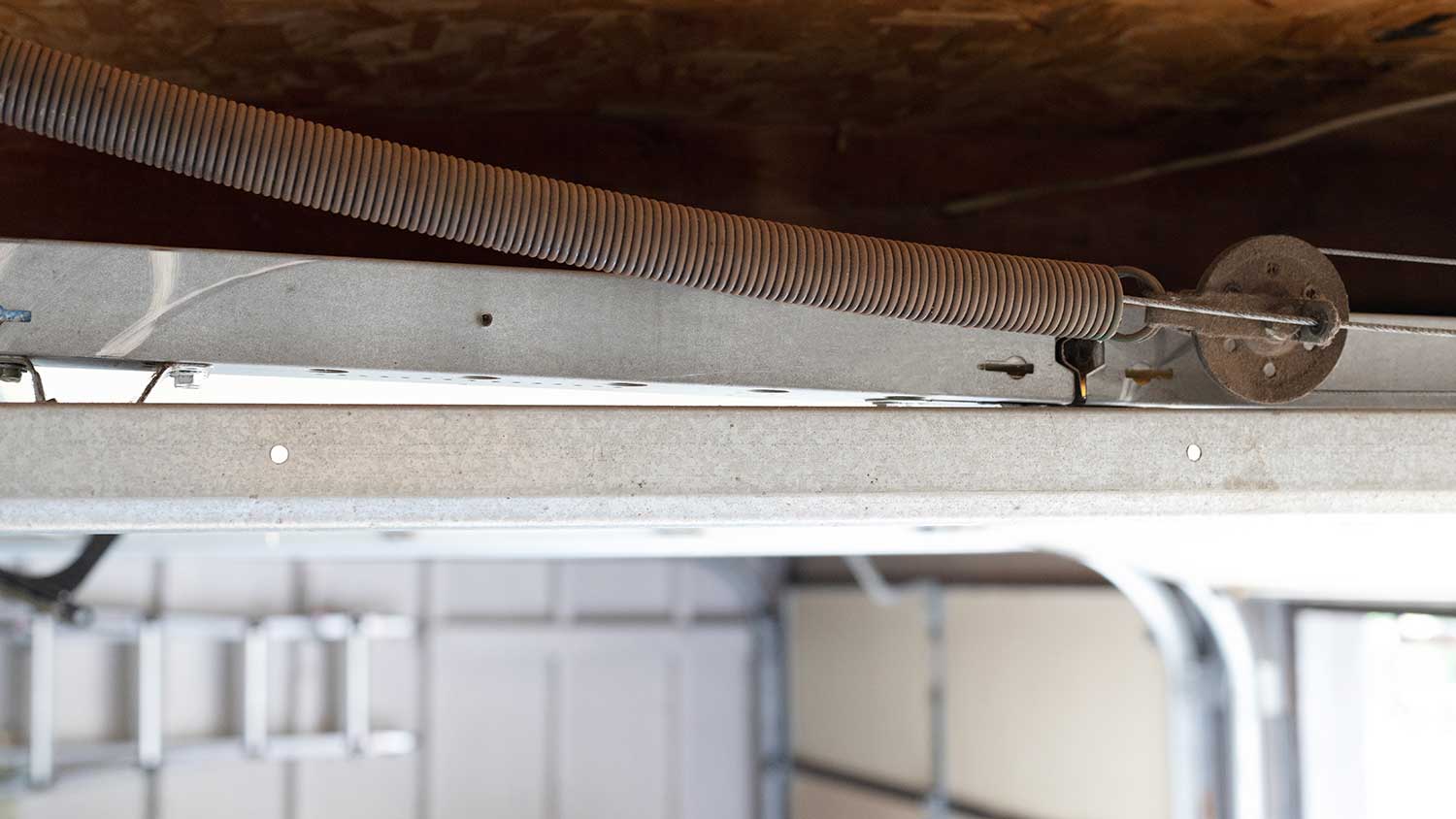
Double-looped springs feature two loops at each end, which help evenly distribute tension and reduce stress on the attachment points. This design makes them more durable and better equipped to handle heavier garage doors and frequent use than other extension spring types.
| Pros | Cons |
|---|---|
| Longer lifespan than open- and closed-loop springs | More expensive than other extension spring types |
| Can withstand the weight of heavy garage doors | Noisier than torsion springs |
| Evenly distribute tension | Not as widely available as open- and closed-loop springs |
Best for: Heavy residential garage doors and systems that require additional strength and durability.
9. Clipped-End Extension Springs
Clipped-end extension springs feature clips at the ends that reduce stress on the spring’s coils. This design helps prevent premature wear and breakage, making them an excellent choice for heavier garage doors or systems that see frequent use. These springs are often used when reliability and safety are a priority since they’re more durable and offer a longer lifespan compared to open- or closed-loop springs.
| Pros | Cons |
|---|---|
| Clip design reduces stress on the coils, minimizing the risk of breakage | Higher upfront cost compared to standard open- or closed-loop springs |
| Relatively long lifespan | Replacement may be more complex and time-consuming due to the clip design |
| Provides smooth and stable door operation | Less durable and quiet than torsion spring systems |
Best for: Homeowners with heavier or high-traffic garage doors where durability, safety, and reliable performance are a priority.



